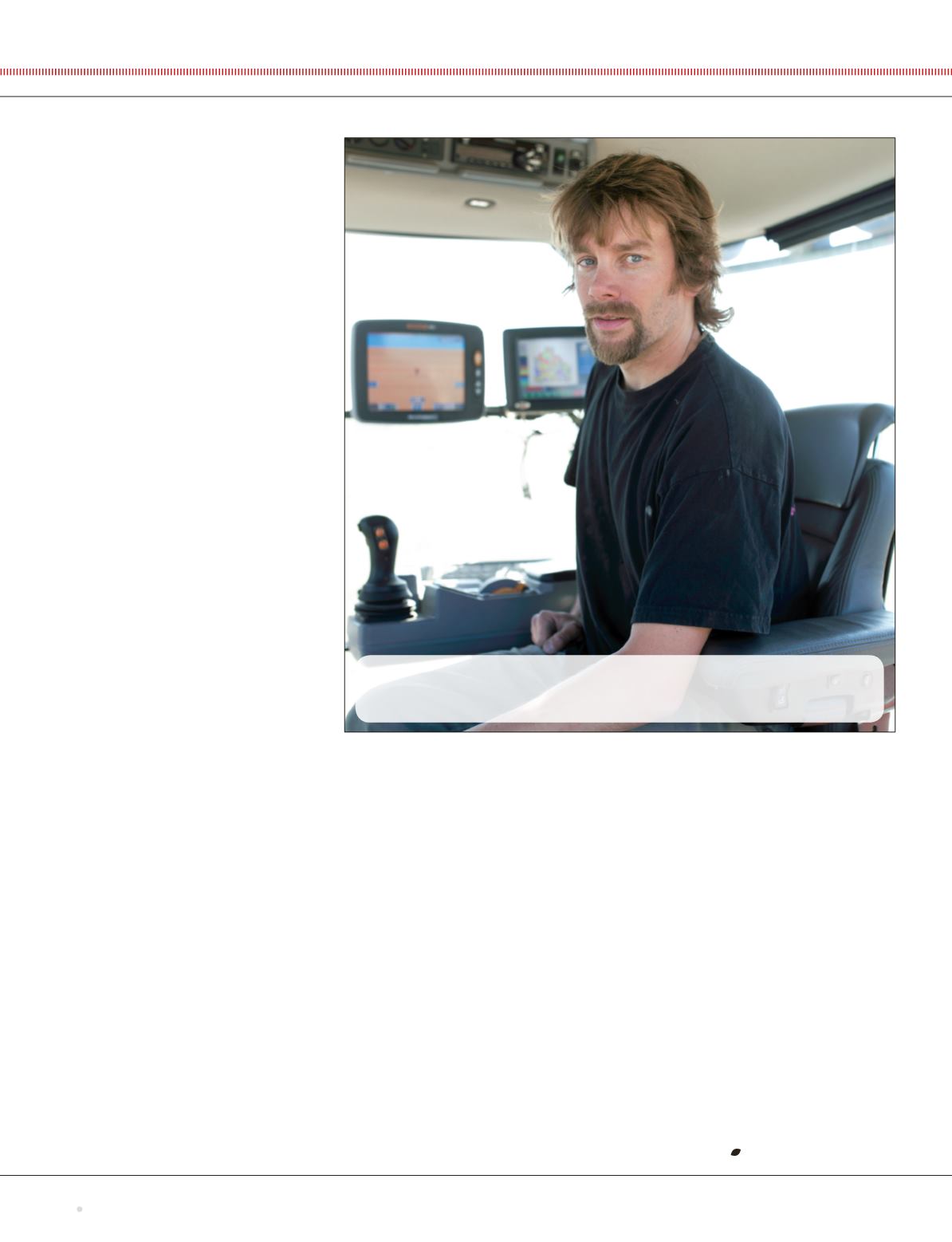

The Food Issue
2016
Grains
West
38
zero tillage, the practice of minimum soil
disturbance by forgoing annual tilling—
but that progress isn’t celebrated.
“Farmers have done a great job at
adapting their land management to shift
away from tillage, but consumers are
completely unaware of that shift—they
don’t know there could be major dust
storms every summer or ditches full of
eroded soil. Those things hardly happen
now because of changes farmers have
made,” he said.
Patrick Kunz farms near Beiseker,
AB, and he’ll be the first to tell you he
welcomes questions about how he farms
and why he makes the management
decisions he does. He’s also keen on
change—recognizing that criticism is
sometimes warranted and that farmers
need to be open to trying something
new and shifting gears away from how
they’ve always done things.
Agriculture—the production of
food—happens in a biological system.
Biology is life; every change, an addition
or a subtraction, impacts something
else, for worse or for better. Too often,
when a particular tool—herbicides
or biotechnology, for example—is
criticized, the conversation centres on
the perceived risks or the unknown.
But what many of these concerns or
these calls for bans and avoidance fail
to take into account is the cascade of
consequences that can occur if farmers
stop using a certain tool.
Let’s use glyphosate, the popular
weed killer commonly known by its
trade name Roundup, as an example.
This non-selective herbicide is quite
likely the only crop chemical many
urbanites can name. Ignoring some of
the controversy for a moment, Kunz said
he’d like to see consumers understand
that the reduction in tillage on his farm
means adapting his weed management
practices as well.
“We’re still working at improving
land impacted by tillage,” Kunz said.
Glyphosate and other herbicides allow
him to reduce or eliminate tillage on
his land. That means using less fuel to
produce the same crop. It also means
his land stores more carbon in the form
of soil organic matter. Less tillage also
means less erosion or movement of soil
and soil nutrients through wind or water
movement. Tillage isn’t a chemical and
it’s not made in a lab, but it can have
negative environmental consequences,
and Kunz wants everyone to know.
He understands that consumers
have concerns and questions about
farming, and his goal is to show people
that farmers like him are committed
to constantly improving. “We haven’t
reached some pinnacle of farming,”
Kunz said. “I don’t think for a moment I’m
farming how I will be farming in 20 years,
and that’s not a bad thing.”
Unfortunately, Kunz has limited means
of connecting with consumers these
days. “Twitter is great, but there’s so
much nuance in farming, so many trade-
offs. You can’t explain that complexity in
140 characters,” he said.
To that end, Kunz has organized an
informal gathering of friends and friends-
of-friends to join him at his feedlot for
a tour and some productive dialogue.
Kunz hopes the face-to-face interaction
will allow him to share and explain more
of the complexities of farming, so that
the next time these consumers have
questions or concerns, they’ll reach out
to him first instead of just assuming the
worst of the farming industry.
And he won’t stop his one-man
awareness campaign anytime soon.
“I’ve got four kids. I farm with my
brother and he has three kids. The land
we farm is the land they will farm, we
hope, and we really do want to leave it
in better shape for them than it is even
now,” he said.
IN THE DRIVER’S SEAT:
Patrick Kunz is happy to answer any questions consumers might
have about his farm and the management decisions he makes for his operation.
Photo: Adrian Shellard.









